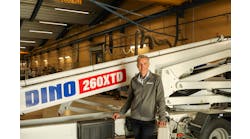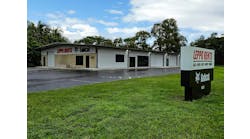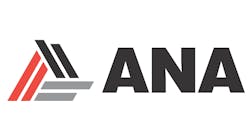I had the chance to go up in Genie’s 180-foot boomlift during the recent ARA Rental Show at a Genie event at ESPN Stadium, the spring training home of the Atlanta Braves. The lift was set up in foul ground down the right field line. It was the day before the Braves’ players were due to arrive for spring training. The machine was to be moved out before the players arrived, but I don’t think any line drives would have reached 180 feet up.
I was impressed with the machine’s hydraulics and how smooth the ride was going up to 180 feet. It was a bit windy that evening, and I was impressed by the machine’s sturdiness. You’ve had a chance to read about the SX-180 in these pages going back to our December issue when it won the Grand Prize in our Innovative Product Award: http://rermag.com/business-info-analysis/raising-super-boom-rer-announces-2013-innovative-product-awards. Now the machines are coming off the assembly line and are actually on jobsites. Re-rent specialist Acme Lift acquired one of the first ones and rented it immediately to an oil refinery in Houston.
Now JLG is coming out with a 185-foot boomlift. I haven’t had a chance to get a good up-close look at it although I did see it briefly at ConExpo. We’ll certainly be reporting on it later on.
Whether an aerial work platform goes up 180 feet, 185 feet, or 12 feet, safety is paramount, and that’s why we at RER devote our cover story every March issue to the topic of aerial safety and if you haven’t seen our recent article on the topic, please go to: http://rermag.com/aeriallifting/rental-companies-safety-everything. The ground-breaking work of the International Powered Access Federation, here in the U.S. and internationally, is vital to this industry, as is Genie’s Lift Pro aerial safety program, with its user-friendly approach to training. Organizations such as the Scaffolding Industry Association and the American Rental Association have contributed, as have others over the years.
NES Rentals CEO Andy Studdert is a veteran of the airline industry and I admire the detailed approach to safety he has brought to NES — and I am by no means slighting any of the other rental companies that have outstanding safety records by mentioning Studdert — but his background in the airline industry has obviously informed NES’ attitude. You don’t usually have a minor accident with a jetliner. Although minor mishaps can occur with AWPs, accidents can also cause serious injuries and fatalities. Just because only one or two people are killed or injured instead of dozens or hundreds does not mean safety should be taken less seriously.
The rental industry has made tremendous strides in making sure appropriate training is provided both to rental company staff as well as customers. Some companies, such as NES Rentals and Metrolift mentioned in the article, make every member of their staffs take essential safety training even if they will never actually use a lift themselves, so that the company culture is infused with this knowledge. Even if the employee’s job is accounts payable or some other administrative task, the awareness of proper safety practices permeates these organizations in a vital and positive way. People in the office understand something about what’s going on in the yard or on the jobsite, and there are a lot of benefits to this approach.
If your rental company isn’t up to date on aerial safety practices, I urge you to review how your employees are trained, their ability to train and familiarize customers, whether or not you are providing manuals for customers on machines, and if you are doing everything you can to prevent accidents. Accidents can happen, even when all detailed safety procedures are followed, how much more so when they are not. There are plenty of source materials that can help in this area, and IPAF, ARA and any aerial work platform manufacturer would be happy to make sure those materials are available to you. If you prevent one accident, it will be well worth it.





